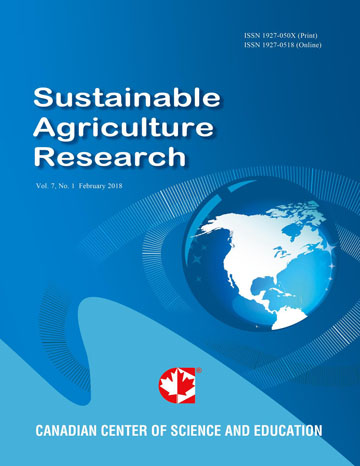The Interplay between Informal and Formal Bylaws in Supporting Sustainable Crop Intensification in the Uganda Potato Production System
- Makuma-Massa Henry
- Paul Kibwika
- Paul Nampala
Abstract
The study assessed the interplay between informal and formal bylaws in supporting sustainable crop intensification, using a case of potato crop production in southwestern Uganda. The study used a descriptive case study design to understand and accurately describe the experiences of farmers in the potato crop subsector in the region. This involved mixed study approaches that ensured coded meaning of consistent responses to the study, and descriptive statistics facilitated sequential understanding of findings and how each related to one another in respective themes. The numerical scores enriched the findings by authenticating the qualitative outcomes of the study to minimize bias. The study used review of documents and literature; six Focus Group Discussions; and 22 Key Informant Interviews to gather diverse experiences of respondents patterns of responses, the main factors or categories, and key responses under every category. The Study found that the greatest informal bylaw was eucalyptus growing (50 percent), followed by permission to graze (18 percent), and control damping (18 percent). The widely represented formal bylaws had a comparatively lesser role in supporting SCI, although with greater emphasis on quality seed (22 percent). Formal bylaws were stronger at setting clear boundaries between users and resources (18 percent), users having procedures for making own rules (11 percent), regular monitoring of resources and users (15 percent), issue sanctions (16 percent), conflict resolution (15 percent), and coordinated activities (3 percent) than informal bylaws. The major benefits for operating as institution were the collective strategy for the market (26 percent), which was less to guarantee sustainable livelihoods for farmers. Individual farmers were driven by desire for faster benefits (13) and preferred following own rules (12 percent). There was more emphasis on market access, regardless of the nature of produce output (35 percent), whether the market worthy or not, and less on environment sustainability. The informal and formal bylaws are separate but united for a common purpose of intensifying potato crop production. Nonetheless, even when combined, they are not strong enough to support SCI. There is a need to strength bylaws on soil and water conservation, improved and quality seed potato and environment sustainability to support SCI, which provide the basis of greater markets and sustainable livelihoods.
- Full Text:
 PDF
PDF
- DOI:10.5539/sar.v11n2p1
Index
Contact
- Joan LeeEditorial Assistant
- sar@ccsenet.org
